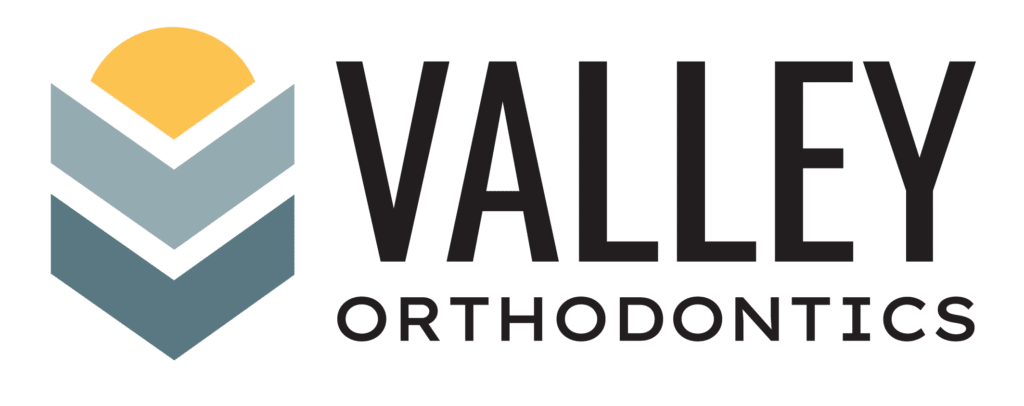Braces are a time tested and highly effective way to straighten teeth, correct bite problems, and improve long term oral health. At Valley Orthodontics in Wasilla, AK, we customize every braces plan so that children, teens, and adults can achieve a healthy, confident smile that fits their needs and lifestyle.
What Can Braces Correct?
Braces can address many common orthodontic issues, including:
-
Crooked or misaligned teeth
-
Gaps or spaces between teeth
-
Overbite
-
Underbite
-
Crossbite
-
Open bite
Correcting these problems does more than improve appearance. A well aligned bite makes chewing more comfortable, protects tooth enamel from uneven wear, and helps support long term jaw health.
Types of Braces at Valley Orthodontics
Because every smile is different, we offer several types of braces so you can choose an option that fits your goals and comfort level.
Metal Braces
Traditional metal braces use small metal brackets and a thin archwire to gently move teeth into place. Modern metal braces are smaller and smoother than in the past, which makes them more comfortable and easier to keep clean. Many patients enjoy choosing different elastic colors to personalize their smile throughout treatment.
Ceramic Braces
Ceramic braces work the same way as metal braces but use tooth colored or clear brackets that blend in with the teeth. This makes them a popular choice for older teens and adults who want straighter teeth with a more discreet appearance in photos, at school, or at work.
Clear Aligners
Clear aligners, such as Invisalign, straighten teeth with a series of custom-made, removable trays instead of brackets and wires. Aligners are nearly invisible and can be taken out for meals, brushing, and flossing, which many patients find convenient. They are a good option for responsible teens and adults who want a flexible, low profile way to improve their smiles.
Your Braces Treatment Journey
The braces process at Valley Orthodontics is designed to be clear and predictable from start to finish:
-
Initial Consultation: We examine your teeth and bite, take digital records if needed, and discuss your goals. This visit helps us recommend the type of braces that will work best for you.
-
Personalized Treatment Plan: Based on your exam and records, we create a plan that outlines how we will move your teeth and approximately how long treatment should take.
-
Placement of Braces or Aligners: Braces are carefully placed on your teeth, or your first sets of clear aligners are delivered with detailed wear instructions.
-
Progress Visits: Periodic appointments allow us to adjust your braces or check your aligners so your teeth continue to move as planned.
-
Finishing and Retainers: When your teeth are in their new positions, braces are removed and retainers are provided to help maintain your new smile.
Preventing Orthodontic Issues with Braces
Preventing orthodontic issues begins with maintaining good oral hygiene and regular dental visits. Braces help address alignment issues early, preventing more severe problems from developing. Early intervention not only improves the appearance of your smile but also contributes to better long-term oral health.
How Do Braces Support Proactive Oral Health?
Braces do more than straighten teeth; they help prevent long-term dental and jaw problems. By guiding teeth into proper alignment, braces promote:
-
Balanced bite function that reduces strain on the jaw joints
-
Less wear on tooth enamel, protecting the teeth from uneven grinding
-
Improved chewing and speaking, especially when alignment issues are corrected
-
Lower risk of jaw pain and discomfort related to misalignment
-
Easier brushing and flossing, which supports healthier gums and fewer cavities
This proactive approach not only enhances your smile’s appearance but also helps you maintain long lasting oral health and comfort.

Long Term Benefits of Braces
Straightening your teeth with braces offers benefits that last far beyond the end of treatment:
-
Easier brushing and flossing, which supports healthier gums and fewer cavities
-
Less strain on the jaw joints and chewing muscles
-
Reduced risk of chipping and uneven enamel wear
-
A more balanced, attractive smile that can boost confidence in social and professional settings
With proper care and retainer wear, the results of braces can last a lifetime.
Frequently Asked Questions
Got questions? We’ve got answers! Here are some of the most common inquiries our patients have. Click each question below to learn more.
Hard, sticky, and chewy foods can damage brackets and wires. It is best to avoid items like hard candies, popcorn kernels, ice, and very sticky sweets so your braces stay intact and treatment stays on schedule.
If something feels loose or pokes your cheek, you can gently cover it with orthodontic wax until you can be seen. Call our office as soon as you notice a problem so we can schedule a repair and keep your treatment moving forward.
Yes. Retainers help keep your teeth in their new positions after braces are removed. We will give you specific instructions on how often to wear your retainers so you can protect your new smile for the long term.
Most patients visit every 4 to 6 weeks. These appointments allow your orthodontist to make adjustments, monitor progress, and ensure your treatment stays on track.
Good oral hygiene is essential during treatment. Brush thoroughly after meals, floss daily, and use tools like interdental or orthodontic brushes to clean around brackets and wires. Regular dental checkups help keep your teeth and gums healthy throughout treatment.
